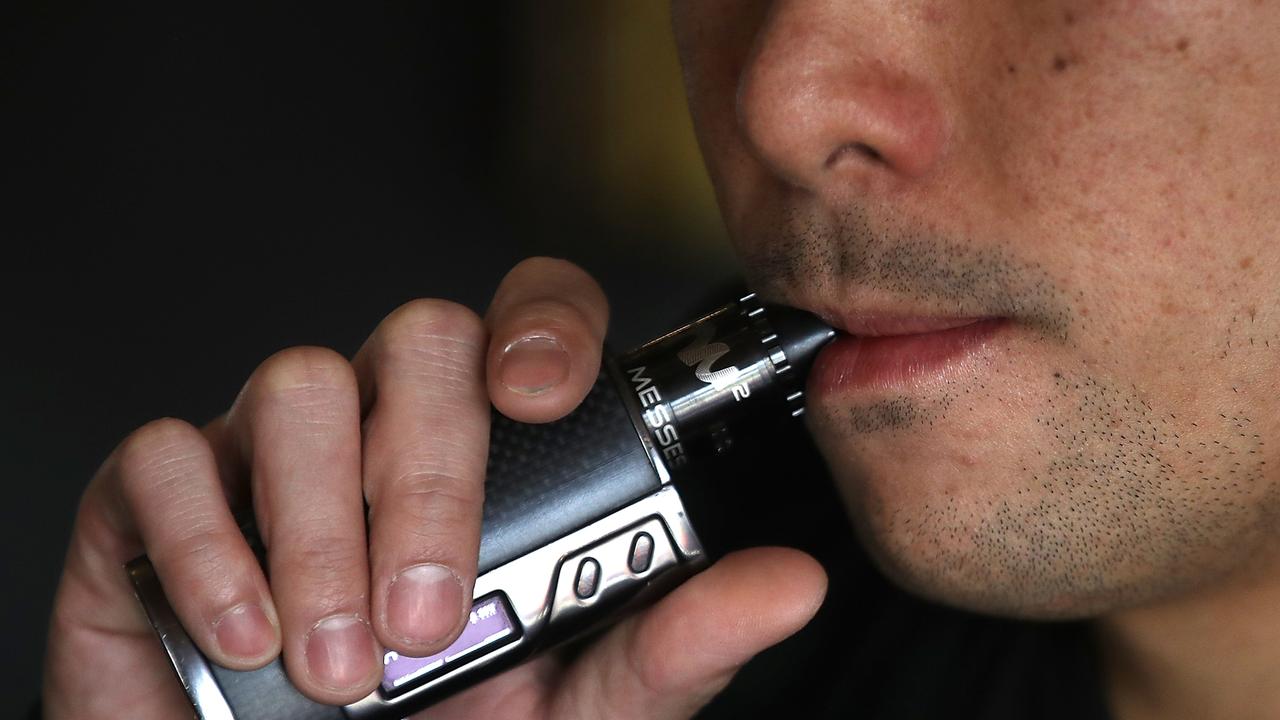New report says vaping isn’t as safe as you think
NEW reports show vaping isn’t as healthy as you would think, but yes, some say it’s still better than smoking cigarettes.
IT WAS hailed as the “healthy alternative” to smoking tobacco and helping people give up the darts for good, but a new study has given vapers something to think about.
Daily e-cigarette use potentially doubles your chances of a heart attack according to the University of California, San Francisco (UCSF).
What’s more is the new research also shows most of those who use e-cigarettes still continue to smoke cigarettes and using the two was the most common pattern among vapers in the study.
Senior author of the report, Professor Stanton A. Glantz, said using both products simultaneously is more harmful than one or the other.

“Someone who continues to smoke daily while using e-cigarettes daily increases the odds of a heart attack by a factor of five,” he said.
Speaking to Business Insiderin February after the summary of the study was first made public, Professor Glantz said his report was the first to show the long term implications of e-cigarettes.
“We’re the first people to show a long-term impact of e-cigarettes,” he said, and “given that it’s consistent with what we know biologically about how vaping effects the heart, we wanted to get this out there.”
While the report makes a strong case against using both e-cigarettes and traditional cigarettes on their own and in conjunction with one another, there have been reports that suggest vaping is the safer option of the two.
A Public Health England (PHE) report suggested vaping only poses a small fraction of risk and can be a useful tool for those trying to quit smoking.
“Our new review reinforces the finding that vaping is a fraction of the risk of smoking, at least 95 per cent less harmful, and of negligible risk to bystanders. Yet over half of smokers either falsely believe that vaping is as harmful as smoking or just don’t know,” said Director for Health Improvement at PHE, Professor John Newton.
The PHE actually suggested anyone wanting to quit smoking but has struggled should make the switch to e-cigarettes and seek help from a professional.
Professor of Tobacco Addiction and lead author of the PHE report, Professor Ann McNeill, says although nicotine is addictive, it’s the actual smoke from cigarettes that results in tobacco-related diseases and death.
“It’s of great concern that smokers still have such a poor understanding about what causes the harm from smoking. When people smoke tobacco cigarettes, they inhale a lethal mix of 7,000 smoke constituents, 70 of which are known to cause cancer,” she said.
“There are now a greater variety of alternative ways of getting nicotine than ever before, including nicotine gum, nasal spray, lozenges and e-cigarettes.”

Of course, Australia has a more conservative stance on vaping. Earlier this year, NSW followed in the footsteps of other states, banning vaping in public spaces.
Queensland, Victoria, Tasmania and the ACT all also outlaw the use of vapes anywhere you can’t smoke.
You could cop a fine of up to $550 if caught using a vape in areas you shouldn’t, like public transport stops, commercial outdoor dining areas, sporting grounds, swimming pool and within 10m of childrens play equipment.
The regulation of e-cigarettes is a collaborative effort between the Commonwealth, state and territory governments.
Weirdly, only e-cigarettes that do not contain nicotine are legal in Australia despite nicotine being in normal cigarettes.
However, soon itmay be possible to lawfully import nicotine for “personal therapeutic use” with a prescription for up to three months.
The National Health and Medical Research Councils (NHMRC) current stance on e-cigarettes is “there is currently insufficient evidence to support claims that e-cigarettes are safe and further research is needed to enable the long-term safety, quality and efficacy of e-cigarettes to be assessed”.
Since 2011, NHMRC has committed over $8.5 million for research into e-cigarettes.



